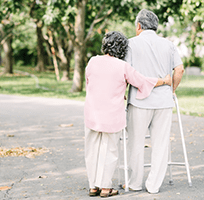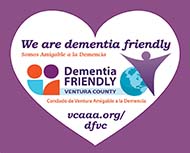
If you are a Medicare patient, you know the drill. As soon as you sit down with your health care provider, you are asked a familiar series of questions. One of the first is always, “Have you had a fall in the last six months?”.
There are good reasons why this question gets asked. The number one reason older adults end up in emergency rooms across the United States is from a fall. The National Council on Aging has some alarming statistics to share about the prevalence of falls and resulting injuries among seniors:
- Every year, one in four Americans aged 65 and older suffers a fall.
- Every 11 seconds, a senior is treated in an emergency room for injuries from a fall.
- The leading cause of fatal injuries and the leading cause of trauma-related hospital stays among American seniors are falls.
- In the most recent year for which these stats are available, 2015, injuries from falls resulted in $50 billion in medical expenses, with 75% of those expenses paid by Medicare and Medicaid.
As we approach Fall Prevention Awareness Week, our response to these statistics should be renewed awareness of the dangers, and the important recognition that falls can be prevented. There are steps we can take to minimize the dangers of falling. Here are some important, simple tips we can follow in our homes to help prevent falls.
Where Is There a Fall Just Waiting to Happen?
Tour your home and the area around it with some paper and a pencil as if you were on a treasure hunt—only you’re seeking potential fall hazards. If you see loose pieces of carpet, rugs that slide easily, cords or cables on the floor, these items must be relocated. It’s time to be honest about clutter, as well. Stacks of magazines, clothes in the corner, hobby material left out: these items must be stored away from inside walkways. What’s outside that might cause a stumble: the garden hose, yard tools, fallen tree limbs, or sticks? The more you practice vigilance, the more you’ll be able to spot and eliminate fall hazards.
Seeing Is Believing
Nightlights can be purchased very inexpensively at almost any store. Every room and hallway should have a nightlight. It would help if you acquired the habit of not walking into any room without first turning on the light. Going into a closet or some space without a light? Most cellphones have a setting that turns them into a flashlight. Improved lighting can prevent falls.
About Your Clothes
We all like to be comfortable. Unfortunately, we might be wearing something that will prompt a fall. Are there sashes, belts, or pieces of cloth that hang from your clothing as you walk? How well do your slippers fit? Ensure all clothing is well-fitting to reduce the chances of tripping.
Extra Safety Equipment
What sort of fall-proofing could you install in your home? Do you have handrails in the bathroom, alongside the toilets, and on the exterior steps? Are the entry surfaces of the doorways skid-proof? Have you brought the cooking and cleaning items you’re going to use down to your cabinets’ lower levels, so you don’t have to climb? These are inexpensive ways to prevent falls.
Finally, Build Awareness
Since falls are the number one health hazard for older adults, preventing falls should be the priority of every older adult. Have serious conversations with those you trust—health care providers, spouses, children, friends—about your efforts to avoid falls. That way, everyone will be alerted to the need and the means of preventing falls in your home.
If you believe your loved one needs assistance in their home, Assisted Healthcare Services can help. For more information, please contact the award-winning team at (800) 949-6555 or www.AssistedCares.com.







